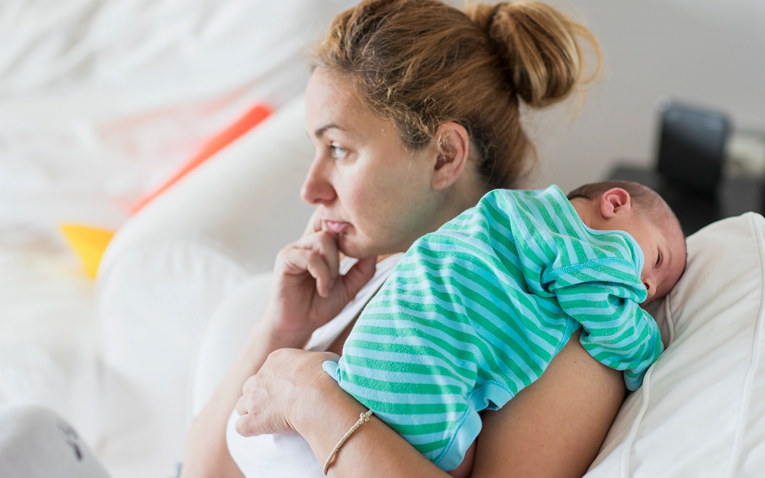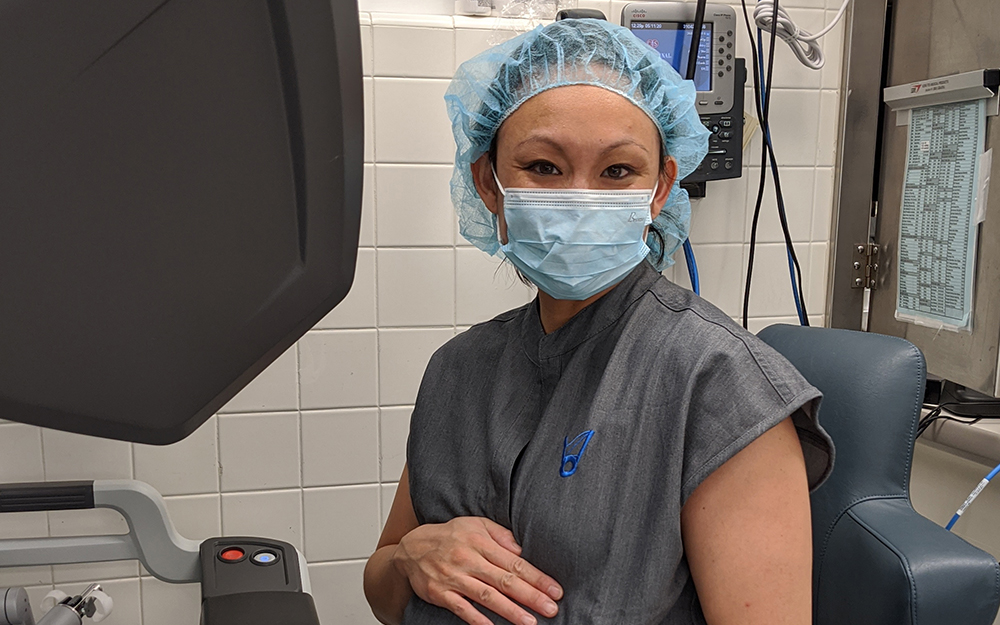Overcoming Postpartum Pain
Date
November 5, 2018

Date
November 5, 2018
Credits
Medical providers featured in this article
In Brief
{{cta-block}}
New moms frequently put their own comfort on the backburner, focusing most of their time, energy, and care on their newborn babies.
Kristin Christensen, a Cedars-Sinai physical therapist who specializes in women’s health, sees women during pregnancy and right after they've given birth.
"We see so many women who ask why no one told them pelvic floor issues or back pain are common postpartum issues," she says. "They often don’t know there's help for these problems!"
Here, she takes us through conditions women often face after giving birth, exercises that can help, and when to consult a physical therapist.
"We see so many women who ask why no one told them pelvic floor issues or back pain are common postpartum issues. They often don’t know there’s help for these problems!"
Incontinence
Urinary stress incontinence affects up to two-thirds of women during or after pregnancy. Exercises and physical therapy can help strengthen the pelvic floor muscles that can be weakened during pregnancy and childbirth.
The fix
Kegel exercises can help rebuild the muscles that support your urethra, bladder, uterus, and rectum.
The trickiest part can be identifying which muscles you’re supposed to flex. If you can stop your urine flow midstream, you’ve found the pelvic floor muscles. (Don’t do this every time you go, Kristen warns. You don’t want to train your bladder not to fully empty.)
With an empty bladder, tighten the muscles for 5 seconds, then relax for 5 seconds. Start with 5 reps at a time. Build up to 10 reps of 10 second contractions. Aim for 3 sets of 10 reps a day.
If the exercises aren’t helping your incontinence, Kristen says physical therapy can help.
Lower back pain and core weakness after C-section
Women who deliver by C-section often have fewer pelvic floor problems than women who have a vaginal birth, but they can develop abdominal issues.
Since recovery time from a C-section is longer, these moms are restricted from lifting and some other activities for a longer period of time—which can result in weakened abs.
The worst exercises for these moms according to physical therapists? Sit-ups and crunches.
They can work the wrong muscles and make the problems worse. That means avoiding that movement even when you’re not exercising, for example when getting out of bed: Instead of doing a sit-up, roll to your side and push yourself up.
The fix
Kristen recommends these exercises:
- Scooping: Lay back on your elbows with a pillow under your knees. As you exhale, squeeze your stomach muscles, and try to pull your bellybutton into your spine.
- Heel slides: With your back flat against the floor and your knees bent, contract your core and pelvic muscles. Then slide your right heel along the floor away from you (socks help; carpet does not), straightening your right leg. Bend your right knee back again. Alternate legs.
Neck and back pain from lifting the baby and breastfeeding
Motherhood taxes your posture frequently. Lifting the baby, leaning over cribs and bassinets, and wrestling with car seats, strollers, and travel systems all pose challenges. Breastfeeding can also lead to aches and injuries.
In Discoveries: A Real-Life Stress Test: New program addresses postpartum mood disorders
The fix
- If possible, lower the side of the crib rather than rising up on your toes and leaning over.
- Ensure that you have proper support for your body when you feed your baby. Put a pillow under your elbow and keep your back comfortably supported.
- Relax your shoulders when breastfeeding. Women often shrug their shoulders to bring the baby to them, leading to injuries over time.
- Try not to look down at the baby the whole time while breastfeeding—that posture can strain your neck.
Wrist pain
Sore wrists and carpal tunnel pain are common for many women with newborns.
Snapping up tiny buttons, changing diapers, pulling on little socks, breastfeeding, and pumping can all lead to pain in your wrists and hands. The carpal tunnel is the passage between the hand and wrist that holds nerves and tendons used to flex the fingers.
The fix
Whenever possible, use your bigger joints rather than your smaller ones.
For example, if you’re positioning your baby, bend your elbows rather than your wrists whenever possible. Wearing a wrist splint at night—since we tend to sleep with our wrists bent—might offer some relief. Stretching your wrists and rotating them can also help treat and avoid the condition.





